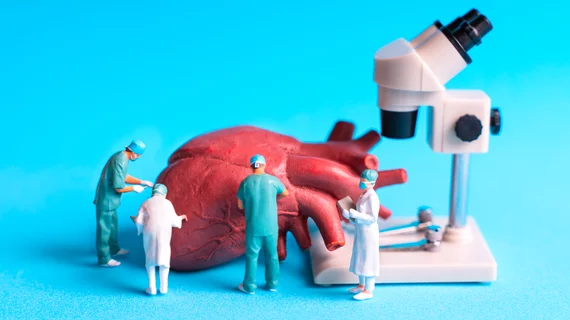Strokes more likely for U.S. heart transplant recipients following policy change
Strokes after heart transplants are much more common now than they were in the past, according to a new analysis published in The Annals of Thoracic Surgery.[1]
One explanation for this shift appears to a nationwide policy change implemented by the Organ Procurement and Transplantation Network (OPTN) and United Network for Organ Sharing (UNOS) in 2018.
These updates were designed to improve risk stratification and keep patients from dying while still waiting for a new heart. More patients with severe illness were prioritized as a result of the new policies, increasing the number of transplant recipients being bridged with temporary mechanical circulatory support (tMCS).
“There has been little research investigating the impact of tMCS use specifically on post-heart transplant stroke rates in the context of the allocation criteria change,” wrote first author Allison Lin, BS, a researcher with the department of cardiothoracic surgery at Columbia University Irving Medical Center, and colleagues. “Although one study included post-heart transplant stroke in its analysis of the 2018 change, the UNOS data set only contained one year of post-2018 data, and stroke was not the major focus of that study. Thus, a gap exists in knowledge regarding post-heart transplant stroke and associated risk factors in the context of this major shift in organ allocation.”
Lin et al. explored years of data from the UNOS database, focusing on heart transplants performed from October 2014 and October 2022. This covers four years prior to the 2018 OPTN/UNOS policy update, and four years after the update had been implemented.
Overall, patients receiving a heart transplant after the OPTN/UNOS update were more likely to present with a history of prior stroke (7.6% vs. 6%) and more likely to experience a stroke following their transplant (3.7% vs. 3%) than patients receiving a heart transplant before the update.
In fact, the group’s analysis confirmed that receiving a transplant after the change was an independent risk factor for post-transplant stroke.
In addition, as one may expect, heart transplant recipients experiencing a stroke face a much higher risk of mortality than those who do not.
Net impact of 2018 policy update ‘challenging to determine’
Lin and colleagues were quick to note that the OPTN/UNOS update has been associated with some notable benefits, so it is not as if patient care is worse across the board due to these allocation changes.
“The advantages and disadvantages of the new allocation system encompass a complex debate,” the group wrote. “Although overall waiting list outcomes have improved, a higher incidence of adverse events aside from post-transplant stroke, such as temporary dialysis, has been associated with the criteria change in both our study and in others. Yet, studies have also demonstrated improved survival in the new era for particularly high-risk patients, such as those bridged from extracorporeal membrane oxygenation, despite longer ischemic time. The net impact of the new allocation criteria will be challenging to determine, especially with the evolving landscape of medical technologies and practices.”
Surgeons evaluate the current state of heart transplant allocation
In a separate editorial, also published in The Annals of Thoracic Surgery, a group of surgeons with Vanderbilt Health commented on how long it seems to take for changes to come to healthcare policies.
“In stark contrast to our tech savvy counterparts in Silicon Valley, where operating system ‘bug fixes’ and improvements are executed at light speed, we in the medical establishment toil in a glacially-paced system, where updates are rare events,” wrote first author Aaron M. Williams, MD, assistant professor of cardiac surgery at Vanderbilt Health, and colleagues.
The group noted that the 2018 OPTN/UNOS update has been linked to both positive and negative patient outcomes. They also looked ahead, wondering what else we will learn about the impact of heart allocation policy changes as time goes on.
“While this study evaluated stroke, one must wonder what other pertinent outcomes remain unrecognized by our current allocation system iteration,” the group wrote. “Will future studies reveal long-term changes in rates of rejection, cardiac allograft vasculopathy, or 10-year mortality? This remains to be seen. Some have advocated transitioning to a more dynamic approach to heart allocation, similar to how allocation is conducted in lung transplantation.”
Click here for the full study from Lin et al. The editorial is available here as a PDF.

